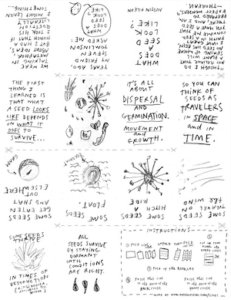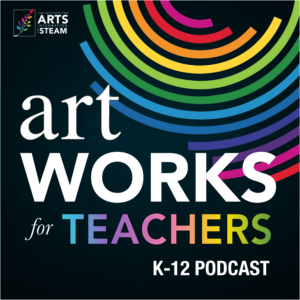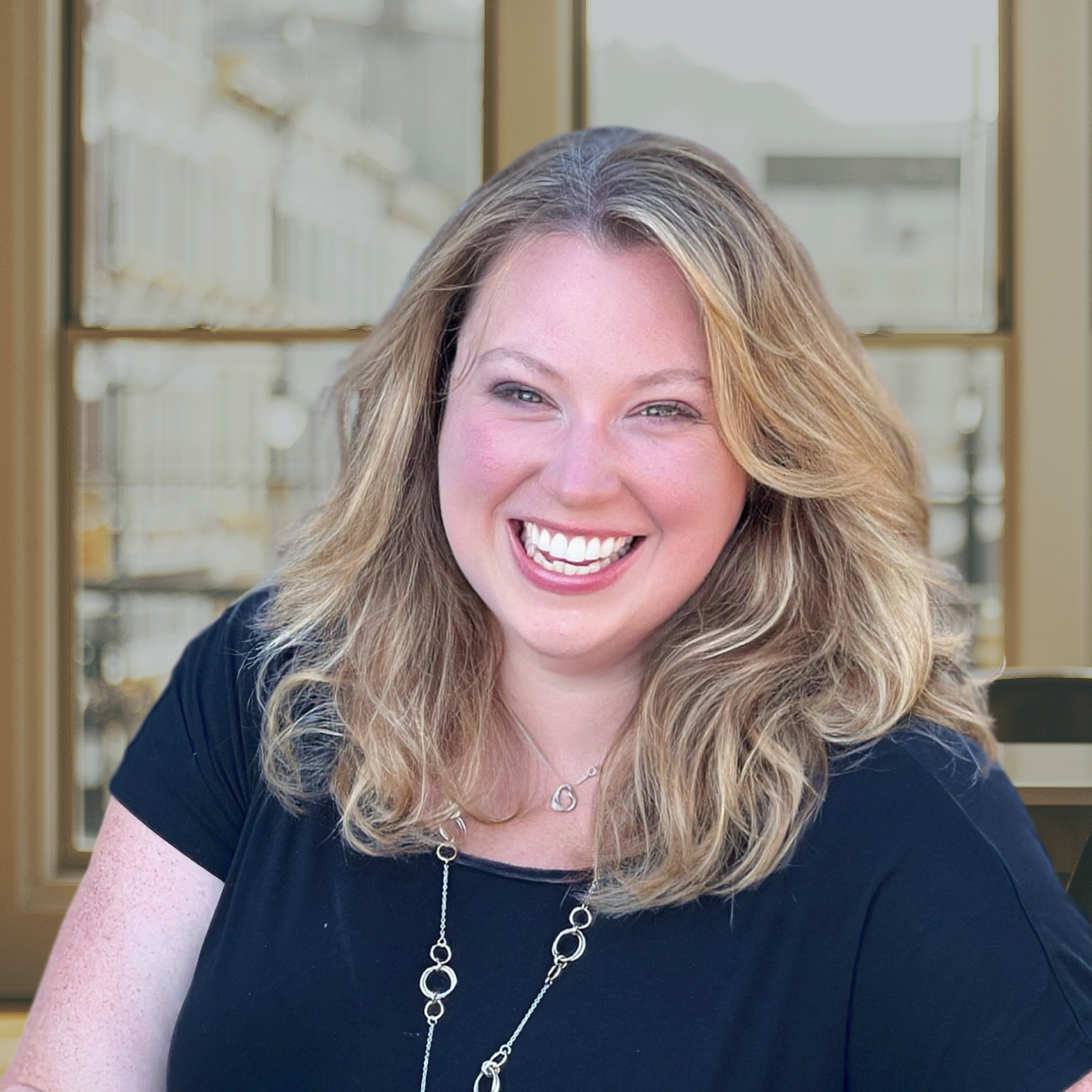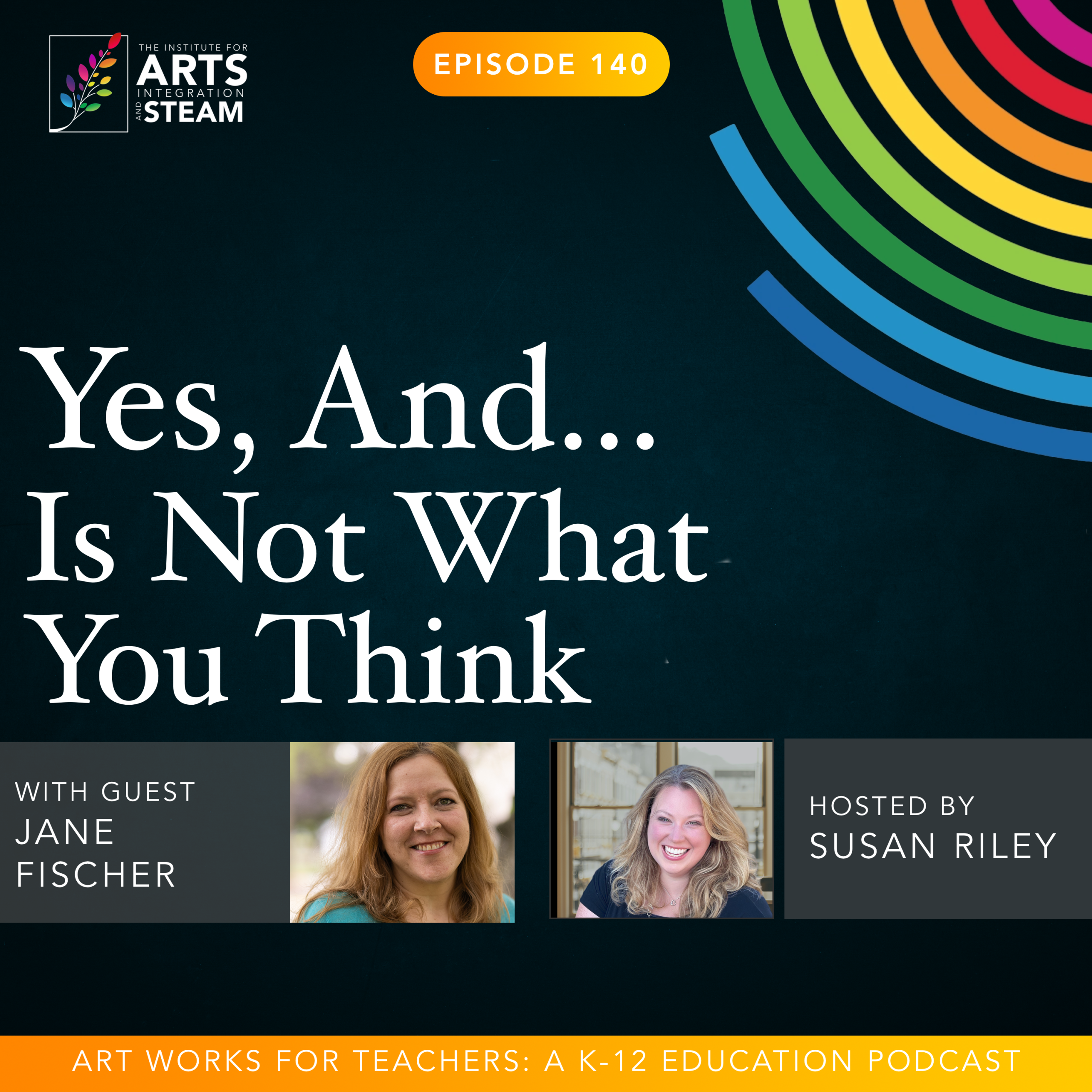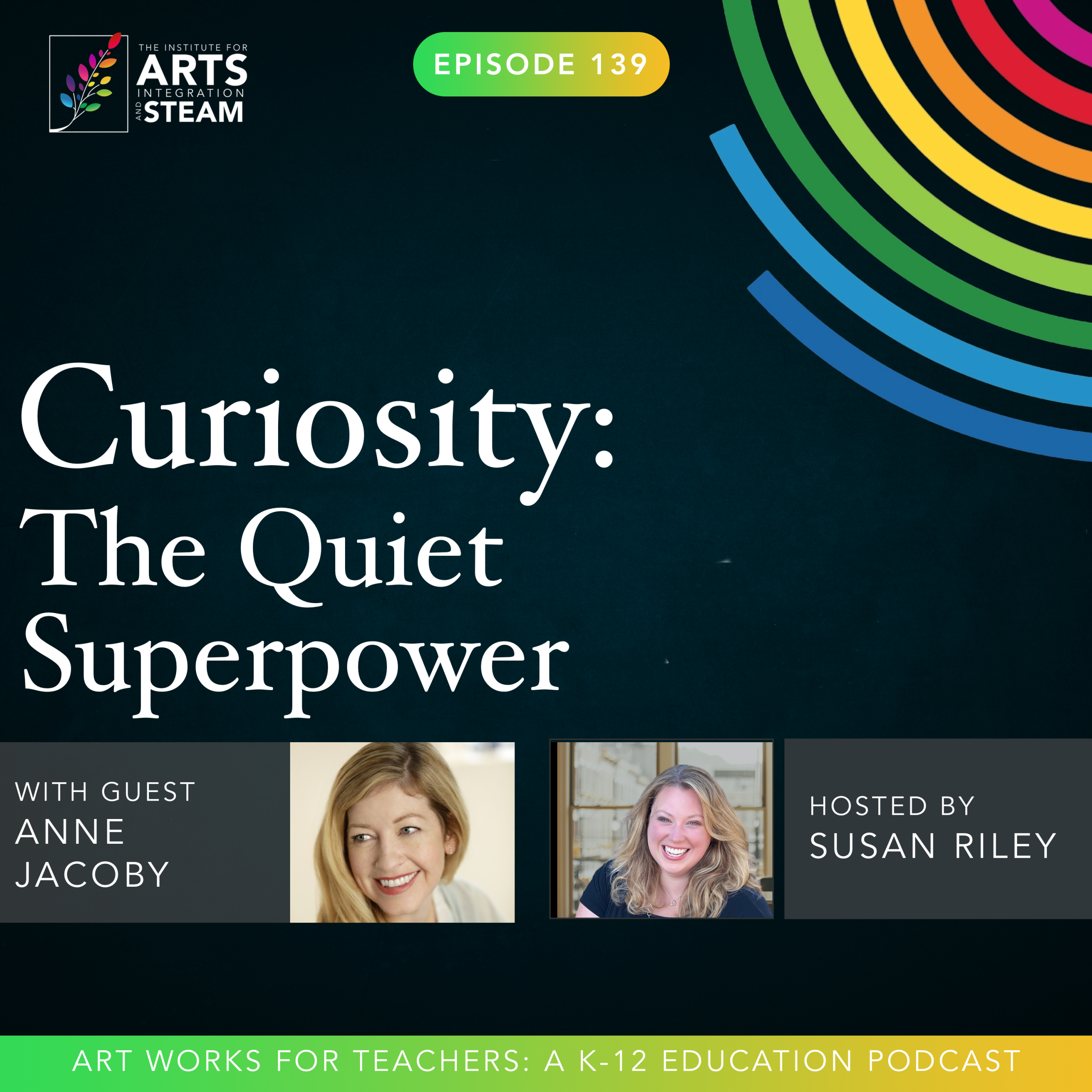ART WORKS FOR TEACHERS PODCAST | EPISODE 027 | 32:42 MIN
How to Keep Going
Enjoy this free download of Austin Kleon’s seed zine.
Austin Kleon: Thanks for having me.
Susan Riley:Of course. So, for anybody who’s been living under a rock and doesn’t know who you are, can you share a little bit about yourself and then your journey as an artist and an author?
Austin Kleon: Yeah. My name’s Austin Kleon and I live in Austin, Texas.
And I am a writer and an artist. I’m best known for this book called Steal Like an Artist. That actually started a trilogy of books. The other two are called Show Your Work and Keep Going. Those have, you know, they’re kind of like guides to creativity in the digital age and they’ve become, you know, fairly popular.
And so I write books and I run a weekly newsletter and make art. And some people might have seen my blackout poetry, which is where I take the New York Times and cross out words leaving a poem behind.
Susan Riley: It’s one of my favorite things that you do actually.
Austin Kleon: Thank you.
Susan Riley:Yeah, of course. So, but as you said, the Steal Like an Artist book is really what many people know you for.
I actually think that changed a generation of teachers and creative people and just in how they think about work in general and art and the two together and how they make significance. But my question for you is, how has that book changed you and in turn your process, if at all?
Austin Kleon: Oh, gosh, that’s a great question. I mean, that book changed my life because it sort of like, you know, when you’re, when you’re a young writer and artist starting out, your, your biggest battle is obscurity. You know, you’re just trying to get people to know you and to know your work. And once you become known, you get a whole new set of problems.
And it’s really interesting. So like once you have a book out in the world that people have read and they love and they want another one, then it becomes, oh no, how do I do this while people are watching, you know? Because Steal Like an Artist was a book that was made from someone who had an audience but not a huge audience.
And so after Steal Like an Artist became a bestseller and became the book that it is, then I had to kind of say, okay, well what do I do with this now? Like, where do you go from here? Yeah. And I’ve always been really interested in just that, that tension between being known and hiding and you know, trying to, cuz the artist really needs to be able to hide. You know in order to bring forth what’s, what’s worthwhile. But they need an audience to survive. Right.
Susan Riley: It’s that weird juxtaposition. Yeah.
Austin Kleon: It’s like the, the musician who gets a hit album and then suddenly their sophomore album comes out. And people who love it, they really hate it cuz it’s nothing like the first one.
Susan Riley: So how do you fight that? Like how do, how do you like have to mentally deal with that?
Austin Kleon: I guess… well, there’s a couple of ways you can do it. I love thinking about music and, and I think bands are a really interesting way to think about it. Take a band like Radiohead, who I sort of grew up with. OK Computer came out when I was like, I don’t know, a freshman in high school, middle school, something like that. They had sort of gone as far as they could go with that sound. And they had huge critical acclaim. The album sold pretty well. It was back when, you know, people bought CDs and you could, you know, make a livin. So they did this kind of 180 and flipped around and did Kid A, which is this very, like almost alienating, kind of brooding electronic album. That was really shocking at the time. But the way they did it is to kind of… that wasn’t their sophomore effort, that was their fourth album. But that idea of, like, what you do after a big success is really, really interesting to me.
And music is a great example. You have a band like in the same era, like someone like Nirvana, you know, a few years earlier they have a, you know, massive bestselling hit, like Nevermind. And then they do like this very abrasive kind of rough album that’s truer to their sound in, In Utero, which is their follow up.
So, you know, it is an interesting question. I don’t know, I think a lot of times you’ll find that the artist sort of rails a little bit against their fame or about against their success and they’re trying to search for like that thing that originally brought them to the work. And so it’s an interesting tension that you have to work out.
For me it was just a matter for me specifically what was interesting, when I did Steal Like an Artist, I didn’t know I had written a self-help book. I thought it was just a book about like how to be an artist. And then I kind of discovered that there’s this whole, you know, creativity section in the bookstore, which I didn’t know about.
And then it became, okay… So you know, your book is in this genre and it’s on this shelf. Then what can you do? How can you play with this? Like, how can you make this like, you find yourself in this position? So like, how can you play with this? And that’s, that’s how I approach the other books.
Susan Riley: I like this idea that you’re playing with it rather because some people will, like you said, rail against it and either try something completely different and, and push it out because the pressure is too much. Or they try to make it exactly like what they did the first time and they can’t capture the same magic.
So I like this idea of playing with that. Do you feel like that with the other two books. Do you feel like the latest one Keep Going? How is that different than Steal Like an Artist? What’s unique about Keep Going from the first one.
Austin Kleon: Well, I think Keep Going is different because I’m different.
I mean, it was written seven years later and I’d been through, you know, I, you know, when I wrote Steal Like an Artist, I didn’t have kids yet. I really hadn’t… The, the climate was different. I mean, like, there was a different presidential administration. I won’t go too deep into it, but you know, like the country had a different tone.
It was like, Steal Like an Artist came out in 2012 and it was like a cheerful kind of upbeat time, or at least around the people I know. And then 2019 was like a very dark time. And I think the other thing that happened in that timeframe between 2012 and 2019 is social media really went, you know, sideways.
And I think people really think that’s really what the book’s about. How do you keep your head when the world is really nuts? Like, how do you be creative when the world is crazy? And the answer is, well, the world’s always crazy, so you have to like, figure out your deal. But I always thought of the trilogy.
And I always loved the Indiana Jones trilogy when I was a kid, so Keep Going is sort of the last crusade of the trilogy. So it’s kind of, it calls back to Steal Like an Artist, but it’s, it’s, and it’s in the same format, but it’s got a kind of depth to it that I think is, is a little bit more.
Susan Riley: Yeah. I really am interested in this idea of the trilogy. Did you think of it that way as you were writing them? Like you knew like, I wanted to create this, like a trilogy? Or is it just kind of how it evolved?
Austin Kleon: No. When I did Show Your Work, the idea was that it was gonna be a Robinhood box set.
So first you steal, then you share. So that, like, I thought of them as a duology, you know? When I did Show Your Work and as time went on, the question became, is there a third book? Is it a trilogy? And what would that be? Yeah. And I took five years in between. Sure, you’re working and keep going.
And, and so now that that trilogy’s wrapped up, of course the question becomes is this a trilogy or is this a qua…? I’m losing the words, but you know, are there four books? Are there five books? Is there a whole shelf of these little books and, and that’s something that I, you know, that’s something I just have to figure out, you know, creatively myself.
Susan Riley: Yeah, sure. So when you talked, you talked a little bit about the book, that it’s a little bit more nuanced than, a little bit deeper than the, the first book. But I find the way that you write your books a little cheeky. Like I put this in our notes that they kind of portray this “I’m a little self-help book” or “I’m gonna be a gift that you can give your, you know, senior graduating from high school.”
But inside is this, are these nuggets of wisdom that resonate well beyond what those books would typically do. So why did you choose this format? I’m curious and like, what made you go in that direction?
Austin Kleon: Well, that’s very astute, you know, that’s how I like to think of them as, as you know, they’re kind of disarming.
You pick it up mm-hmm, and it’s cute, and you’re like, oh, what is this? And then you flip through it and you’re like, oh, wait a minute. This is kind of, this has a little bit of depth and a little tooth to it even. What happened was that I just didn’t know what I was doing with Steal Like an Artist. I had done this, I had done a book before that was a poetry book. Steal Like an Artist was just a talk that I had done that had pictures and words in it. And that was really… the format of the book was really the idea of my editor Bruce Tracy at Workman. He, he said, well, you know, slides are usually you know, people ask me all the time, well, how’d you come up with the square book?
And I said, my editor said that, well, you know, slides are usually a landscape and books are usually portrait. Why don’t we do a square book? And they said, well, that sounds fun. Yeah, let’s do that. And that’s like pretty much the, you know, that was the thought behind . So then what happened was, you know, the book designer Liddy Tomas, she had taken a go at it and we went through it a couple times and what happened was, I discovered really by luck that the illustrated gift book just happens to be a commercial medium.
By that you can actually sell some books with it. Yeah. That, for someone like me, it is really the perfect thing because I’m somebody who really, my books sing when I’m able to use all of the things I like to do. Like when there’s you know, there’s the writing of course, but then there’s the layout and the structure, but also the illustration.
And all the artwork that goes into it. It just turned out to be the perfect format for someone who I consider is pretty weird. I mean, I, I am, I’m someone who I think what I do is kind of weird. So to have a format that’s pretty commercial and main kind of mainstream, it’s like the kind of thing you’d see like in a, I don’t know, like they sell ’em in the FedEx/Kinkos, you know? I mean, they’re there or the craft store at the cash register or something.
For me, it’s really like a dream come true to find a commercial format. That you can kind of let all your weirdness as a creative person into. Yeah, that is the whole thing that really made the books wonderful to me. Now when we did the first three books, Workman, my publisher, was an independent company and I had a editor, Bruce Tracy, who was great.
We worked on all the books. Bruce has since retired, and Workman has become a conglomerate. I mean, they’ve been bought by Heche, so the publishing industry changes, you know, changes. And so the question will be for the next, you know, couple of books, am I able to find a publisher that we can do these kind of handmade, I think of them as fancy zines, basically.
Yeah. I mean, like, I’m a huge ziner. And so I, I think of them as fancy zines. They’re very handmade and, and people ask like, well, you know, what’s , you know, like what font do you use for the headlines? And I’m like, it’s not a font. It’s literally me handwriting lettering, everything. And they’re like, well, why don’t you just use, make a font outta your handwriting?
And I’m like, because I think you can really tell, I can, I think you can really tell that there are things in this book that are handmade. And I like that tension between the handmade elements and the type set. Kind of prim and proper SIF type face. I’m just a nerd that way. I just, I like everything about books is what I think I, I really think about the whole.
Feel and every little element of the book is, yeah, I’m obsessed with the craft.
Susan Riley: I mean, you can tell you’re, you’re very much into the craft of it. And yeah. And you know, very, and I’m gonna tie this back, and this is a little off-script, I think, but I’m looking at the, the record player behind you and I’m noticing the vinyls and and for me as an eighties kid, one of the gifts that my husband gave me that I absolutely adore is the vinyl record player.
Going back to the 33s and being able to go back through my parents’, you know, album collections that I never appreciated when I was younger and so appreciate. Now turn on Chris Stapleton on a to 33 and I’m like in heaven. Yeah. So, but that, I think, again, it’s reminding me how much you’re into the craft because there’s a difference between a vinyl, a cd, and digital, right?
And you can hear it when you’re listening as an audience member, the same way that you can tell when something is artificial or if it’s very much real, right? That you’ve, that you’ve put, put the thought behind it. So I’m wondering, just because I’m an arts integration specialist, this is what I do. I look at merging things together.
Does your love of music and clearly the art of music itself, do you feel like that influences your artistic practice and your artistic practice may in turn also influence your love of music?
Austin Kleon: A hundred percent. You know, I won’t get up to get it, but you know, the back of Steal Like an Artist, I wanted to look like a track list on the back of a cd.
And I, and I actually think about when I make these books I think about them as albums in the sense that you have songs, the chapters are songs. And the track list, you, you know, is the structure. And so I, yeah… and I’m also, I am a musician myself.
Just like everyone else in Austin, music’s like, you know, a hobby or side project passion. So I would say that music deeply, deeply influences the books, not just in the content, because there’s stories of musicians and stuff like that. But I actually always wanted the Steal Like an Artist to feel like a punk album.
I really wanted it to feel like, like a Ramones record or like, yeah, something very fast and, and comes at you. Yeah. But that you could replay over and over, you know, I, that I really wanted it to be that way, and I always loved that the books kind of looked like a cd. And it was, it was funny because when we did the calendars and the calendars are like 12×12, so they’re almost like a vinyl size.
So I like, I kind of used to hold the calendar and be “Oh, this is like what it would be like if it was on record?” You know? So there is a kind of wish fulfillment to that, you know? And, and I would also say that liner notes are very much what I want my books to feel like, you know, in the sense of lots of picture, lots of images and text and all that. So yeah, you, I mean, like, I would say music is a huge, huge, I mean, it’s not, it’s not… I listen to music when I’m in the studio and oh, you know, right. Blah, blah, blah… It’s really the whole, I think in some ways, making books is my version of trying to make records..
Susan Riley: Mm-hmm, I can see that. And having gone through your books and, you know, they’re very well worn in our household, I can see that resonate through that book. So I think, I mean, for me, it just feels like I keep coming back to this word ‘real’ Austin. Your work just feels real in a world where that is no longer common ever.
Austin Kleon: Oh, thank you. That’s a huge, huge compliment to me. I mean, I think one reason the books feel real is because there’s a real person behind them. I mean, a lot of… a lot of books are, I mean, and this is not a bad thing, but a lot of books are the product of teams, really. I mean, like, you know, there’s an editor, there’s always an editor, but then there’s a design team, and then there’s a… you know, I have always had, I have my hand.
My hand is all over these books, and so I think that that’s part of it. I think that’s part of what comes through in the books is just that like, one person made everything. And I think the fact that it’s multimodal as far as verbal and visual, then you, you really get to feel more of me because you get me not just as a writer, you get me as like a visual thinker and an artist and you get these different textures.
So let me say by the way, I’m not thinking about any of this. When I put a book together, this is ball. This is like a, this is the critical you know, hindsight brain looking at this when you’re doing the work, you’re not thinking… It’s like, it’s like Top Gun and Maverick. You know, you don’t have time to think, right? Just do, don’t think.
So, I would say like, to everyone, you know, watching and listening. This sounds really good in hindsight. It’s not what I think about when I’m making it, and I think that is part of the naturalness to it is I’m just doing what seems intuitive to me. And you know, so that’s what works with, and again, it’s the weird chance and randomness of the process, just like, how did you end up with the square book? Well, the landscape and portrait and we just made it square.
Susan Riley: Settled in the center. Yeah, of course. So I would love to play a little word association game if you’re up for it. Okay. Based on, these are words that I’ve selected from, that are pretty heavily used in your books and on your blog and in some of the research that I’ve done, in other articles that you have participated in.
So I’m just gonna say a word and I would love for you to just immediately say what you associate with that word. Okay.
Austin Kleon: Okay. All right.
Susan Riley: So here we go. Perfect.
Austin Kleon: Wrong.
Susan Riley: Irreverence.
Austin Kleon: Comedy.
Susan Riley: Play.
Austin Kleon: Kids.
Susan Riley: Pursuit.
Austin Kleon: Trivial.
Susan Riley: Of course, of course! All right, last one. Artist.
Austin Kleon: Work.
Susan Riley: I love that, I love that. And here’s the thing, it’s like Music in our Schools month and it’s Art in our Schools month and you know, I find it ironic that it’s at the same time as testing in our schools month. And so, when people think of artists, they don’t think of work, right?
They, they don’t… they think it’s some sort of, like, magical thing that just happens. And it’s not, it’s clearly work. I love that you associated with that.
Austin Kleon: Well, you know, one of my favorite stories is Mr. Rogers would bring sculptors and musicians and people who did different things, he would bring them on the show and you know, sometimes the people would say to him, well, I don’t know how to talk to kids.
Like, what do I say about my work? Or whatever. And he’d say, I don’t want you to talk. You’re, you know, he’s like, I don’t want you to talk to the kids. I want you to do what you love in front of them. And to me that is really with my own kids, we live in a world in which it’s very hard for people to see you.
Because so much of what we do is this kind of digital, ephemeral, intangible work that happens on a screen and whatever. And so one of the gifts of being someone who makes a lot of things by hand, is that your kids can see you working. And so like with my kids, I mean, Dad’s always got his head in a book or he’s always like, scribbling in some notebook or, you know, my kids don’t care at all about what I do, which is wonderful because.
But I do think in terms of… I think part of the reason that the books mean something to me, and I think the reason they feel real, if they do, is that they are the books I wish I had when I was a kid because I grew up in a very rural area. And I didn’t know anyone who did the kind of things that I wanted to do.
And so the books are, I used to wonder like, just how do you do this? And so, in a sense, the books are me trying to do that for my former self. And, and so, but I think it’s a real, you know, I think, I believe deeply in the power of simply doing what you love in front of people. And I think that activates something.
I think it’s true. I also tend to think that everything good for kids is good for adults. You know, I mean and so there is… Part of the problem with kids is getting them exposed to all the different ways of being in the world, because you don’t know what’s going to activate. A kid doesn’t know what’s right until they see it being done in front of ’em.
Right? Yep. Like you might be a great welder, but you never see anybody weld anything. Or you might actually be really good at milking cows or being a farmer, whatever, but you’ve never been on a farm before, you know? So it’s this kind of… there’s so much exposure. It’s really an exposure problem. We have this world right now where, you know, supposedly we’re all connected and we can see each other.
But you know, it’s like, what do kids wanna be right now? They wanna be YouTubers? So yeah. So we need to find a way to, you know, for me it’s like, I think parents, you know, I, I think parents are always pushing their children to, you know, take violin lessons or take karate or whatever.
But I’m always telling people, well, do you listen to the symphony? Do you listen to classical music in the house? Do you play an instrument? Do they see you practice anything? Do you do Tai Chi out in the yard? You know, it’s like, you know, I, I think that the more you can do, and really do things in front of kids, they’re better off. You know, even if they don’t respond to it now, those images will always stay in their minds and those memories will always exist. I’ll step off the soapbox.
Susan Riley: No, no, no. It just, it reminds me a lot of Malcolm Gladwell’s book Outliers and knowing, like, the opportunities that that’s what’s the difference.
That’s the difference between a Steve Jobs and somebody who only like working on a computer and not developing a brand. It’s the, his, his opportunities were different. And so I think that’s what you speak to is the idea of what opportunities are we making available and what are we showing and working on together.
And that’s definitely something that’s missing, that togetherness is missing. To close out though. Austin, there’s a question I always ask everybody, and that’s what, if you could tell teachers one thing about creativity, what would you want them to know?
Austin Kleon: I think I would say that… I would quote Jim Henson to them that attitude is, is… I think it’s attitude. Attitude is caught, not taught. And I think the same is true of creativity. I think it’s caught, not taught. And when I talk to teachers, the number one thing teachers don’t have is time.
You know? Yeah. I mean, they do not take time for themselves. They are constantly working. They’re constantly grading papers. They’re constantly coming up with lesson plans and emails and meetings. Take the time in your life to do something creative, something that lights you up, something that gives you energy.
You have to do it because kids can tell when somebody is turned on. And the way to turn yourself on is to spend the time doing the things that light you up. And I think that, you know, that, that to me is, is the thing that creativity is caught not taught. And you have to practice the thing, the very thing, that you are trying to impart to the kids. And that could be creativity in any, that could be, you know, a hobby you have at home. That could be the way you put your lesson plans together. That can be in your materials, but you have to be… unfortunately with kids, it’s like we have to be the adults, we want them to become and it’s like, oh geez!
Yeah, I mean, the fun thing for me is that, you know, I really just get to be the kid I was, you know, part, a big part of my job is just being who I was when I was 13 and sitting in my room making stuff so that’s a good gig to have.
Susan Riley: I was gonna say, that’s living the dream quite honestly.
Austin Kleon: It is. It’s very much so .
Susan Riley: Awesome. So where can people find you online? Where can they stay in contact with you?
Austin Kleon: The easiest thing is to just Google me, Austin Kleon, or go to austinkleon.com. My website, I’m old school. I still have a blog that’s up to date all the time, and the thing that people really like that I do online is my weekly newsletter.
It’s free, on Friday. It’s a list of 10 things that I think are worth sharing every week. It’s very, it’s like my books. It’s fast. It’s multi, there’s always a lot of stuff in it and you can get through it pretty quick. Yeah. And if you like that, now we have a community that’s kind of forming in the comments. That’s really fun. Yeah, and that’s, so that’s, that’s something free to check out to figure out. If you like me, if you like my newsletter, you’ll like the books and vice versa.
Susan Riley: Well, I highly recommend cuz I get entertained every Friday. So thank you so much.
Austin Kleon: Thank you so much. This was really fun.
Susan Riley: Of course, thank you. And I am excited for all of our teachers to pick up all three of your books now that we got a trilogy going on. Thank you for what you do in the world, Austin. It really does make a difference.
Austin Kleon: Well, you’ve made my day for saying so.
Austin Kleon’s website – austinkleon.com

